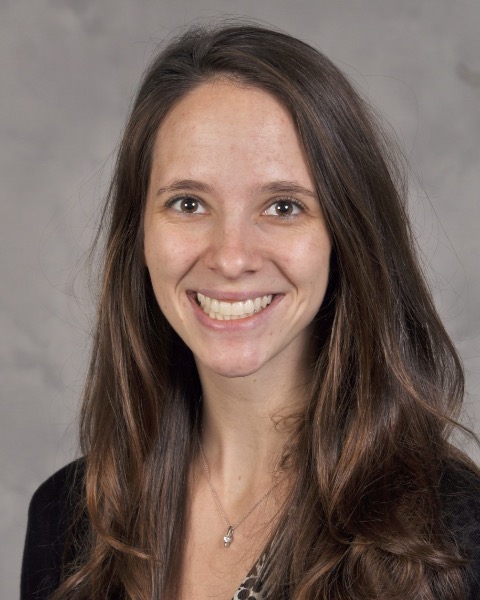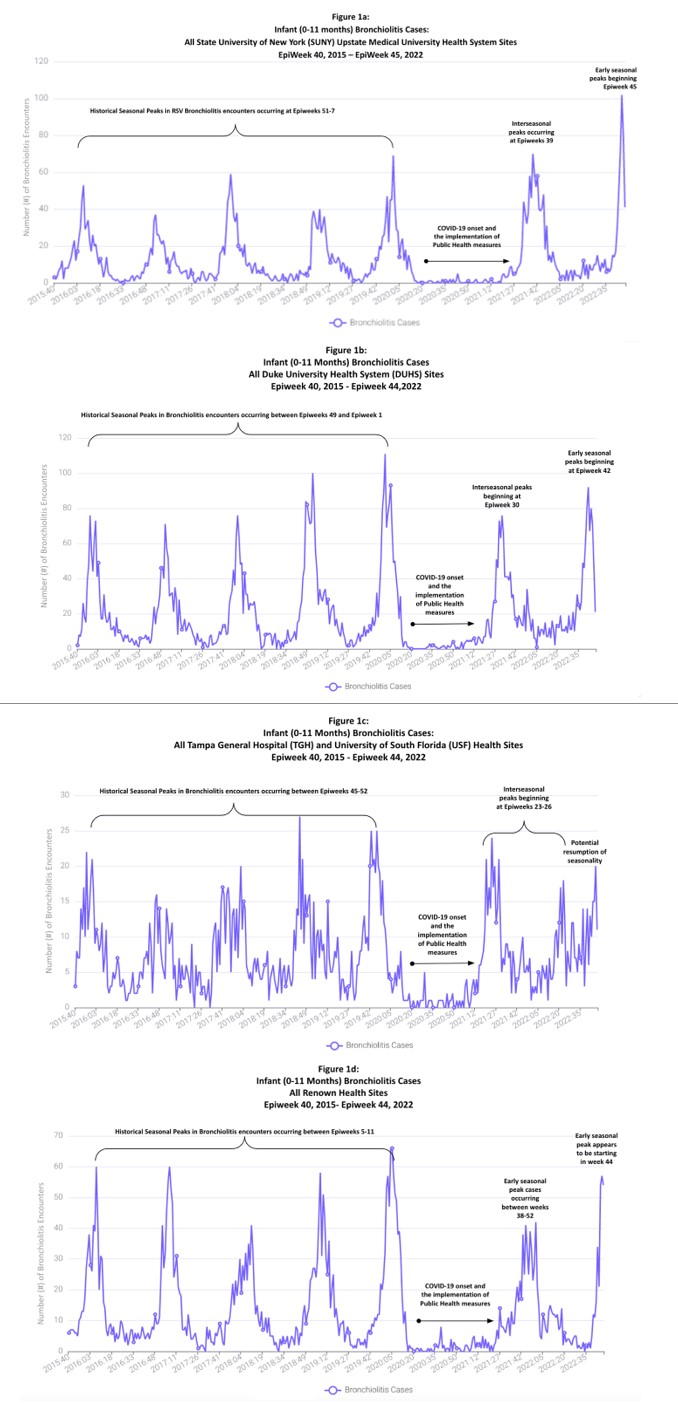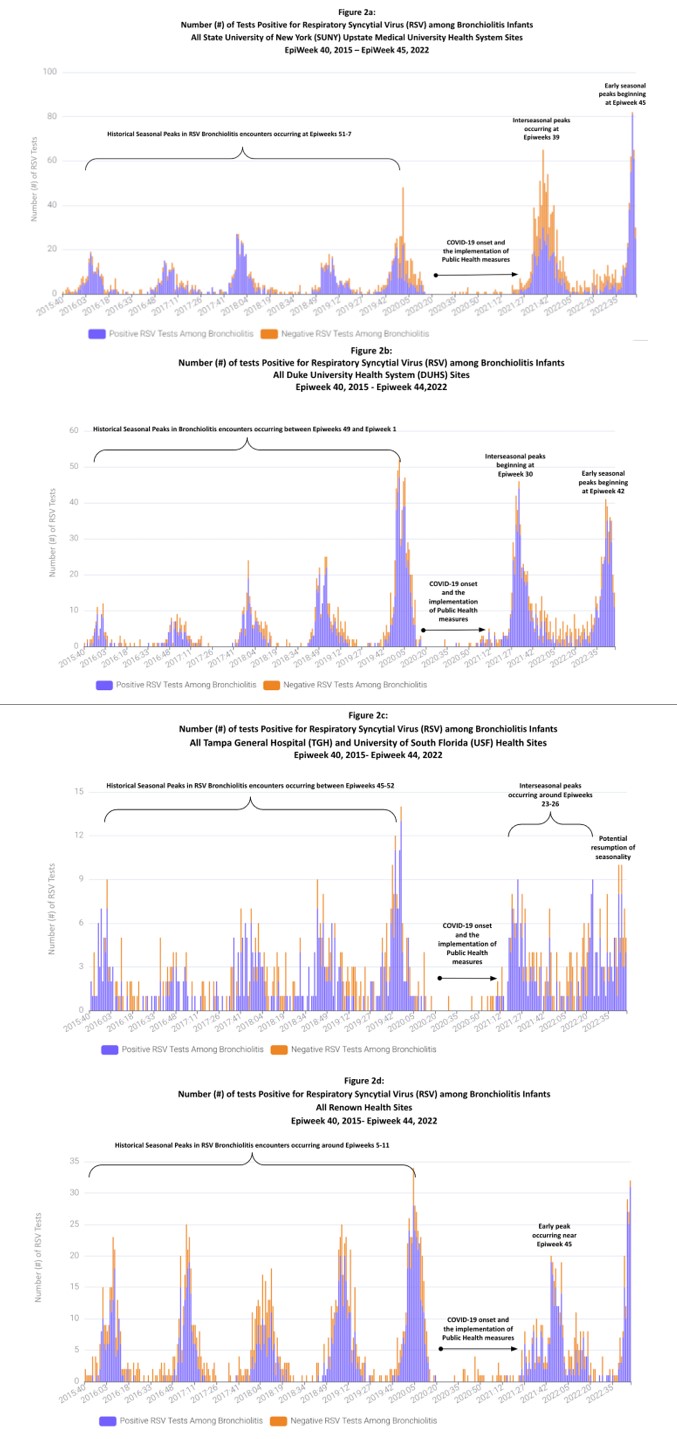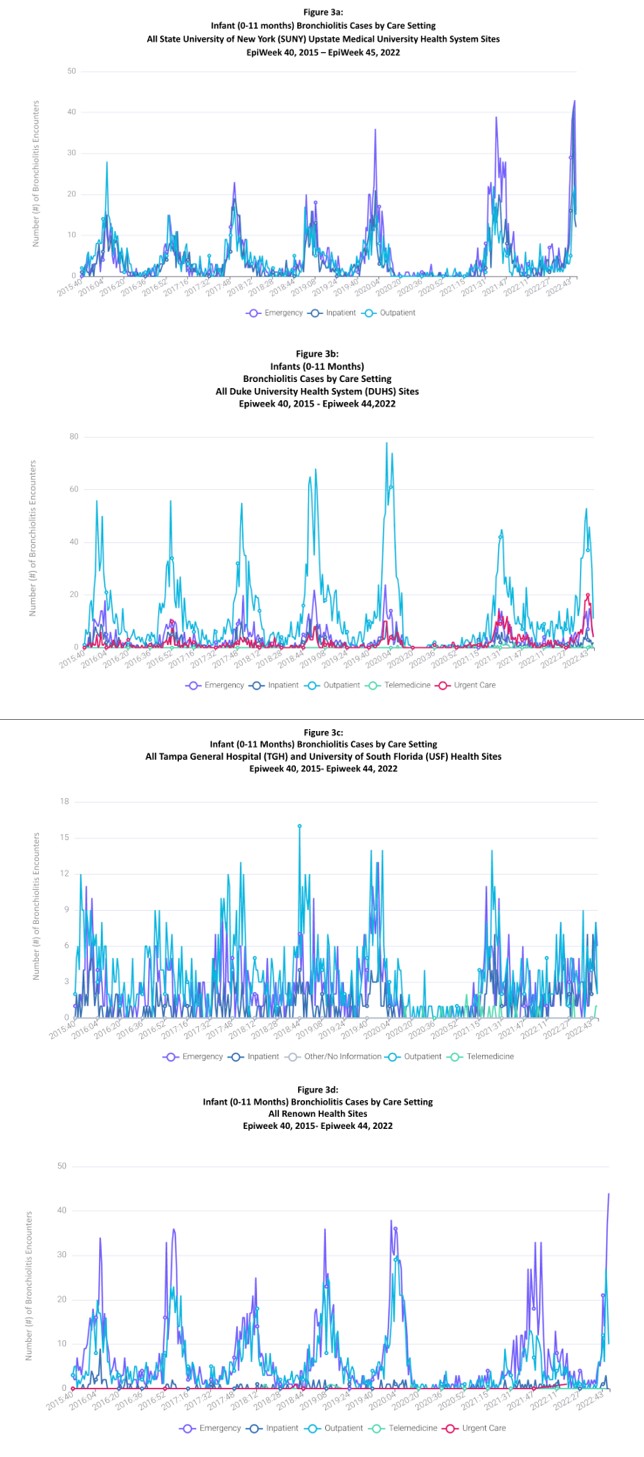Infectious Diseases
Infectious Diseases 2
642 - Seasonality of Infant Lower Respiratory Tract Infections, Including those Caused by RSV, Was Altered During the COVID-19 Pandemic: Results from Four US Health Systems
Saturday, April 29, 2023
3:30 PM - 6:00 PM ET
Poster Number: 642
Publication Number: 642.226
Publication Number: 642.226
Charles T. Wood, Duke University, Durham, NC, United States; Emmanuel Walter, Duke Human Vaccine Institute, Durham, NC, United States; Claudia M. Espinosa, University of Florida, Tampa, FL, United States; Maria Elizabeth Enriquez-Bruce, University of South Florida, Tampa, FL, United States; Sonia Budhecha, Renown Children's Hospital Renown Regional Medical Center, Reno, NV, United States; Amanda Elliott, University of Nevada, Reno School of Medicine, Reno, NV, United States; Joseph Domachowske, SUNY Upstate Medical University, Syracuse, NY, United States; Danielle Daniels, Upstate Golisano Children's Hospital, Pennellville, NY, United States; Zachary Wolf, Clinetic, Durham, NC, United States; Emory Waddell, Clinetic, Raleigh, NC, United States; Mina Suh, EpidStrategies, Mission Viejo, CA, United States; Jon P. Fryzek, EpidStrategies, Rockville, MD, United States; Christopher B. Nelson, Sanofi, Swiftwater, PA, United States

Danielle Daniels, MD (she/her/hers)
Pediatric Infectious Diseases Fellow
Upstate Golisano Children's Hospital
Pennellville, New York, United States
Presenting Author(s)
Background: Respiratory syncytial virus (RSV) is the leading cause of infant hospitalizations and lower respiratory tract infections including bronchiolitis. Surveillance shows that since the start of the COVID-19 pandemic and the implementation of associated non-pharmaceutical public health (PH) measures beginning in March 2020, seasonal respiratory illnesses, including infant Bronchiolitis caused by RSV, have been disrupted.
Objective: To show infant bronchiolitis and RSV bronchiolitis incidence trends across four health systems during the COVID-19 pandemic.
Design/Methods: We assessed electronic health record (EHR) data from infants age < 12months in the State University of New York (SUNY) Upstate Medical University health system, the Duke University Health System (DUHS), Tampa General Hospital (TGH), and the Renown Regional Medical Center Health System (Renown). We examined all encounters for ICD-10-CM codes and laboratory testing to estimate the incidence of respiratory illness due to bronchiolitis and RSV from October 2015 to November 2022.
Results: Prior to March 2020, bronchiolitis and RSV exhibited typical seasonality. With the onset of COVID-19 in 2020, there was sporadic seasonal illness followed by an interseasonal peak in mid-2021. In 2022, an early seasonal peak occurred in all four health systems. (Figures 1 and 2). Most cases are seen in emergency and outpatient settings (Figure 3).
Conclusion(s): During the COVID-19 pandemic, typical seasonal periodicity of bronchiolitis and RSV incidence has been altered, likely by non-pharmaceutical public health measures. 2022 trends indicate a return to typical seasonality. Continued monitoring is needed to determine the impact of the pandemic on disease seasonality to aid future efforts at prevention.



